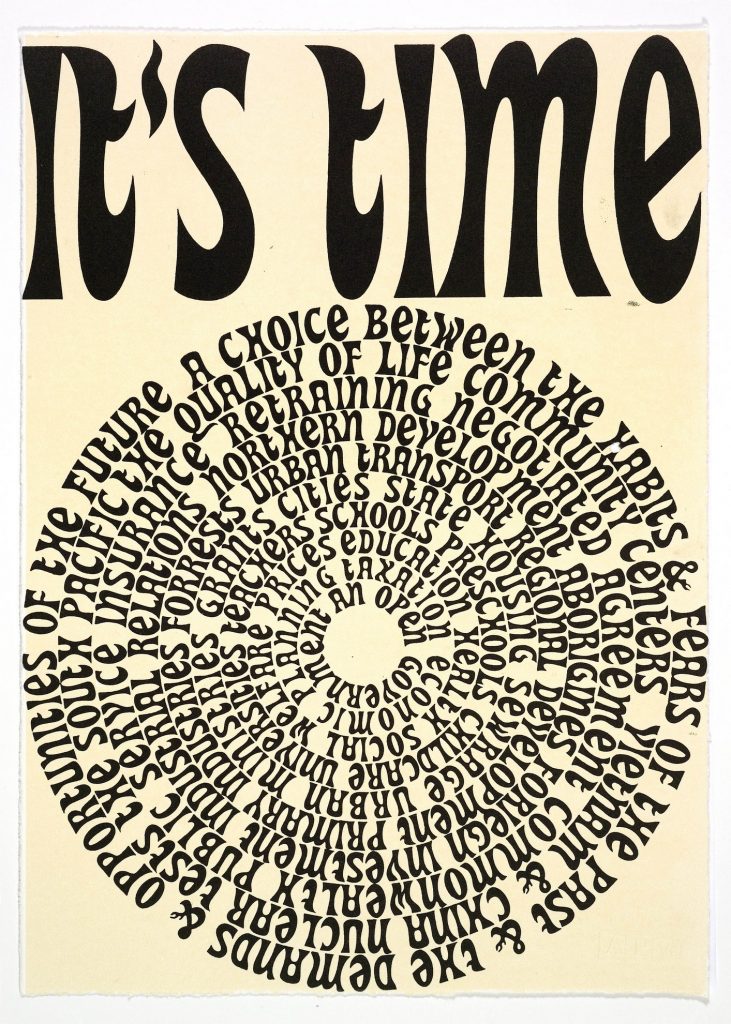Summary
Emily Floyd’s art practice encompasses printmaking, sculpture, installation and public artwork. Perhaps most recognisable are her large, colourful, text-based sculptures, which link to her family history of toy-making, and her bold typographical works (she first trained as a graphic designer). Playful and spirited, these works also reveal the comprehensive research, deep consideration and intellectual rigour that Floyd brings to her art-making. Her work engages with feminism, alternative education, community activism, science fiction and leftist politics, and these intellectual touchstones are given shape by the possibilities offered by archives, collections and design and art traditions – particularly Bauhaus and Russian constructivism. Always approachable, Floyd’s artworks encourage us to think critically about the world we live in and they stimulate debate on issues that impact on individuals and communities.
‘A Little Community’, ‘The Problem Is the Solution’ and ‘It’s Time (Again)’ came into the Art and Heritage Collection from the Australian Print Workshop in 2010. Each produced in an edition of 15, the three works showcase the artist’s consummate skill as a critically and historically engaged printmaker. The works straddle literary, graphic and leftist traditions, reflecting concrete poetry, poster design and the graphic potential of typography in their form, and community activism and social politics in their content. Iconographically and in the resolute call to action, Floyd teases out strands of ecological and social history, making cross-generational connections between the 1970s and today through a continuum of social, cultural and environmental conundrums.
The circular form of ‘It’s Time (Again)’ gestures at time in its many guises: the growth rings of a tree; the face of a clock; the cyclical nature of time, with its diurnal, lunar, seasonal and annual cycles. Floyd’s text suggests that social and political issues are cyclical – in that they are recurring – and so too is the need (again) for action in order to secure a quality, human-centred existence for all. ‘It’s time’, this work tells us, to choose ‘between the habits & and fears of the past & the demands and opportunities of the future’, listing just some concerns that must be resolved to embrace the future positively.
